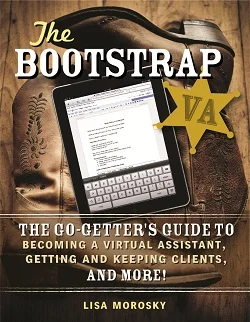
I’m excited about today’s post because I get to address one of the most frequently asked questions I get from those looking to start a virtual assistant business; How to price virtual assistant services. Hopefully I’ll be able to provide a little guidance today on this topic since I worked in the industry even before I knew what a virtual assistant was (true story). I had the opportunity to work with bloggers, non-profits and other business professionals and I’m very grateful that it enabled me to be home with my kids.
Now on to the good stuff! So you’ve set up your virtual assistant business and you’re now ready to find your first client. Or perhaps you already have a potential client waiting for you to get started. But how much should you charge? Here are three tips to help you sort it out:
How To Price Your Virtual Assistant Services
1. Figure out your minimum hourly rate.
How much do you need to make a living? Notice I said make a living and not just earn an income. You could charge $5.00 per hour and earn some income, but will that help you pay your bills? Probably not. So figure out how much you want to make and start there. If you need to make $20 per hour for x amount of hours to make a living, that should be your starting point. However, I want you to take it a step further. Why? Because you’ll want to take into account your overhead and taxes. So instead of $20 per hour, you might need to charge $25-$30 per hour to cover your business expenses and still pull in that $20.
2. Hourly rate or packages?
There’s still a lot of debate amongst virtual assistants about this topic. What’s a package? Basically you set a flat fee for XYZ services. It could work to your advantage depending on the service you offer. I personally did not offer packages and stuck with hourly rates. Why? Because I found that it simply did not work to my advantage. If the client added an extra task or simply made changes that would require more time, I still had to honor my package rate for the work. With an hourly rate I could track my time and invoice for the amount of time I actually worked. This will be your own personal choice. If you want to offer packages just make sure you are very specific about what that includes. Don’t offer social media management for $150 per month without spelling out exactly what you’ll be offering. If that includes 1 Facebook post, 5 tweets and 5 Pinterest pins per day, hash it out with your client first.
3. Demographics and skills matter.
So you figured out your minimum hourly rate and whether or not you want to charge by the hour. Now comes the next step in the rate game. Where will your clients be based? Where do you live? Are you focusing on local clients or strictly virtual? You may be wondering why this matters, well let me explain. If my client was local I knew that my hourly rate was on the higher end of the local market. Does this mean that I lowered my rates? Not necessarily. Before you even consider lowering your rate look at your skills and experience. Do you have specialized skills that set you apart? When I was translating documents, I knew I could easily charge $40 per hour because there were only a handful of professional translators in my area and some charged even more than I did. If it was non-profit that I simply wanted to help out, I would negotiate accordingly.
It’s not always about money…
You may also find that a client could offer other perks such as free training or opportunity to get exposure in an industry you want to be a part of which can all contribute to whether or not you adjust your rate. It won’t always be about earning money even though that is the ultimate goal.
Whatever you decide to charge, I simply urge you to not sell yourself short just to land a client. You’ll regret it the moment you find yourself earning less than you hoped for. I much rather charge $30 per hour and work 10 hours per week than charge $10 per hour working three times the number of hours. When you set the bar low for yourself, you’ll find yourself busier and with less time available to take on the clients that are willing to pay you more.
One resource that I will always recommended and it was my go to resource as a virtual assistant, is The Bootstrap VA book. This guide is worth every penny and has been endorsed by many in the VA industry. It’s filled with a lot of valuable information including interviews with professionals in the VA industry. Click here to visit The Bootstrap VA.
Are you currently a virtual assistant or thinking of becoming one? What are your thoughts on this tricky topic? I would love to hear from you!
*This post contains an affiliate link. Thanks for helping my site continue to stick around!

Hi Jesenia,
First and foremost, I would like to say I love your blog! I am 4 months pregnant and although I plan to work through the duration of my pregnancy, I am definitely considering a career as a VA. I always wanted to stay home with my children at least while they are young and it seems like virtual assisting is the way to do that.
I’m looking to kick off my VA now so that I can be prepared when the baby comes. Any additional tips or advice?
Thanks!
-Theresa
Great tips on virtual assistant rates. Great ideas to help people realize their worth over the taxes, etc. Good job, Linda
Thanks Linda! 🙂
Hi Jesenia,
This post came just at the right time. Yes, I am definitely considering a career as a VA. I’ve even filled out a couple of forms to be contacted by someone. My problem isn’t with my ability to do the work, but rather matching my skills with the appropriate rate of compensation. I feel like I’d do really well since I already have loads of experience in the most common VA services, but I don’t want to hurt my family’s livelihood by charging less than I should.
That’s always the hardest part. However, you’ll find that it will get easier as time goes on. I say set the bar high from the beginning because it’s easier to lower your rate than to raise it. Once you get a client or two under your belt, you’ll have references to back up your work and your asking rate. Good luck!